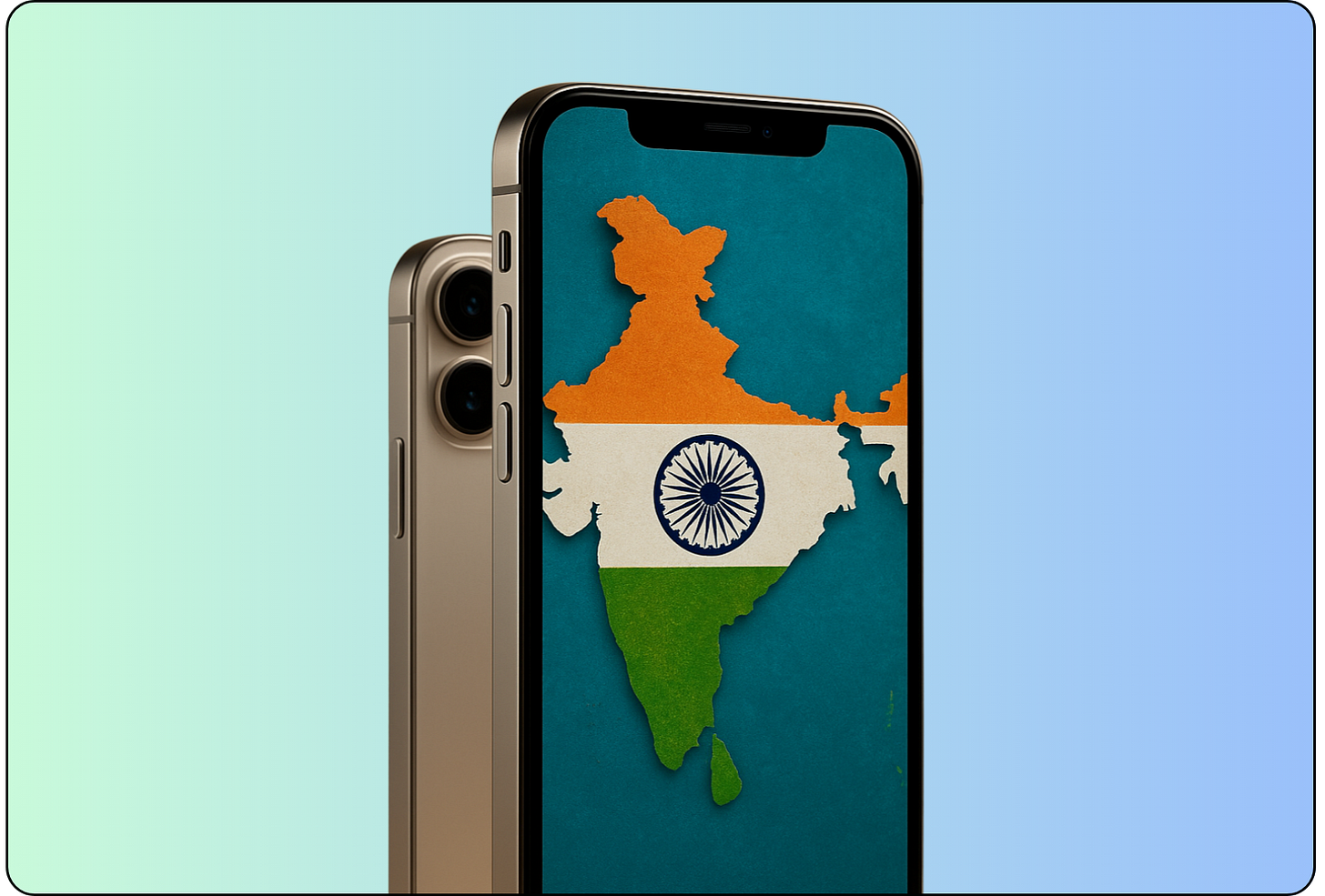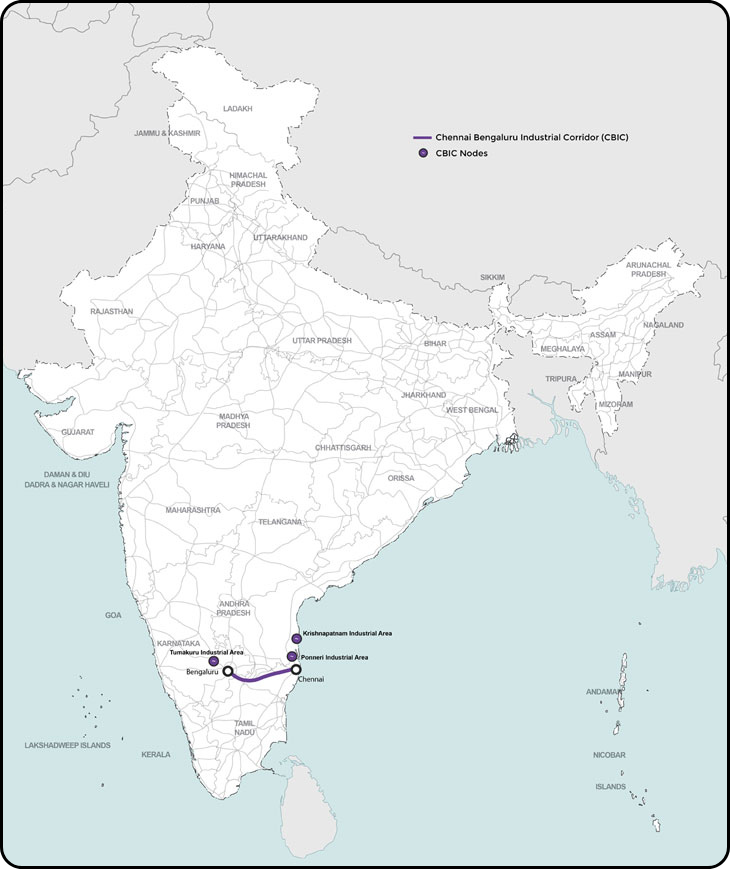Our aim through TVS Weekly is to break down financial stories and concepts simply, explaining what happened and why it matters to you.
No Jargon, no drama! Just stuff that actually makes sense.
Curious? Get more from us on our Instagram, WhatsApp, LinkedIn, or YouTube. Our 985k+ family awaits you!
In this week’s newsletter, we’ll learn about:
Foxconn’s $1.4 billion reinvestment in Tamil Nadu.
Using Present Value of Growth Opportunities (PVGO) to measure hope in markets.
A study technique to remember what you read!
Market Kya Keh Raha Hai Sir?
One big iPhone factory wasn’t enough.
iPhone manufacturer Foxconn, following its $2.6 billion investment in 2023, has now committed an additional $1.5 billion for Tamil Nadu.
But why the rush? In just a few years, something has clearly shifted for Foxconn, for Apple, and for India.
This week, we explore Foxconn’s big bet and how India plans to turn it into supply chain power.
The deals.
Foxconn’s India story began before 2025. The company saw early signs that depending only on China was risky and started building elsewhere.
In 2023, Foxconn broke ground on a $2.6 billion factory in Devanahalli, 40 km from Bengaluru. The 300-acre site aimed to produce 100,000 iPhones monthly and will house 30,000 workers in on-campus dorms.
Once finished, it will be Foxconn’s second-largest plant after China.
The New Deal.
Foxconn is back with new plans. Not just to expand outside China. But to make India the main base for US iPhones.
Apple CEO Tim Cook said that by 2026, all iPhones for the U.S. will be made in India, not China. It's a clear shift.
To do this, Foxconn’s Singapore unit agreed to buy 12.7 billion shares in its Indian arm, Yuzhan Technology, at $1.49 billion.
How does Apple benefit?
India offers Apple a double advantage. Safety from US-China trade tensions & its own grassroots developments.
Push Factor: China & US Trade Tensions
With Trump-era tariffs for China peaking at 245%, Apple saw its China dependency as risky. Even with the current 90-day 10% tariff window, the uncertainty remains.
Later, even if Trump is not in power, problems between the US and China may still continue.
The US buys 51% of all iPhones. To protect this market, Apple decided to move production to India. This makes sense even if it costs up to 10% more. India and the US have a more stable relationship that could lead to lower tariffs on India compared to China.
Pull Factor: Policy & Location Tailwinds
Seeing exits from China, India is preparing itself. Foxconn is being strategic too. The factory which it has invested in sits within Tamil Nadu’s Free Trade Zone.
It’s close to major ports like Chennai and part of the busy Chennai–Bengaluru corridor. The area has good roads, rail lines, and even plans for a new airport.
Tamil Nadu also has the highest number of engineering colleges in India, giving Apple a steady supply of skilled workers.
The government is helping too. India’s Production Linked Incentive (PLI) scheme gives cash rewards to companies that grow their local production. For mobiles and electronics, $4.8 billion has been set aside.
How does India benefit?
For over 20 years, India’s manufacturing has stayed between 13-17% of GDP. This is much lower than Vietnam or Thailand, where it’s around 25%. It slows job growth and leaves many workers underused & underskilled.
So, when global manufacturing companies enter India, it helps solve both problems: jobs and skills.
The Socio-economic ripple
Foxconn’s investments are changing local lives. Foxconn’s original investment in 2023, “Project Elephant”, will create 40,000 jobs, taking them away from the informal sector towards the formal sector.
Real estate is booming too.
Firms are building thousands of homes for workers, many of them women, who make up over half the expected workforce.
Further, this space is still growing. Apple assembled $22 billion worth of iPhones in India in the year to March 2025, a 60% jump from last year.
Expertise Transfer
Apple’s $50 million Supplier Employee Development Fund is training workers in coding, robotics, and more.
This comes as a blessing for India, as Apple’s diversification plan includes more than just assembly but also product development. For this, Apple would train employees.
Can India deliver beyond iPhones?
China still has its fingerprints over the components used to make Apple products. India plans to change that through its investment for upward integration.
That means moving beyond just assembling iPhones to making parts like chips and screens. Tata Electronics has already stepped in, acquiring Wistron’s India unit and becoming Apple’s first Indian manufacturing partner.
A ₹91,000 crore chip fabrication facility in Gujarat (with Tata and PSMC, a Taiwanese semiconductor manufacturer) is under construction, and another Foxconn-HCL plant is coming up in Uttar Pradesh.
These will make chips and display parts, backed by the PLI scheme, which helps cover setup costs.
Can India become the next China?
India doesn’t yet have the expertise or specialised skills needed for this scale. But China didn’t either when Apple first entered.
Apple spent years building China’s manufacturing base. It trained 28 million workers and invested up to $55 billion a year.
That kind of speed, initiative, and specialised knowledge building takes time. Companies like Foxconn are leading the way. India is learning, but it’s early days.
Till then, Apple can walk away from China slowly, but it can’t run, at least not yet.
In conclusion, India’s rise in Apple’s supply chain is real but early. Much of it is due to a push away from China, not a strong pull into India.
Whether India can build more corridors like Tamil Nadu and move up the value chain depends on how well it tackles skills, infrastructure, and trust. Till then, only time will tell.
So, Is India the next China for Apple? Tell me in the comments!
MEME OF THE WEEK:
Dalal Street Dictionary
Imagine your local baker who earns ₹10 lakh a year and wants to sell the bakery. Because he plans no expansion, buyers see the bakery as an FD. They value it at ₹1 Cr.
No one is interested.
Later, the baker hires a new pastry chef who has a better recipe. This increases sales without raising costs. Two private equity (PE) funds appear:
Private Equity A bids ₹1.2 crore.
Private Equity B, more confident, bids ₹1.5 crore.
What has changed? The chef created room for growth. Each fund puts its own price on that growth. We measure this extra value with the Present Value of Growth Opportunities, or PVGO. It is the share of the price that is paid today for future projects.
Formula:
Zero-growth value: the firm’s worth if it pays out all profits as dividends.
PVGO for both PE firms is:
Private Equity A’s ₹0.2 crore.
Private Equity B’s is ₹0.5 crore.
But how is this useful in markets?
A useful way to interpret PVGO is by comparing it to price. Here, think of PVGO as the “hope” part of a share price. If PVGO equals 50% of the share price, investors are paying 50% for growth that hasn’t happened yet.
So, PVGO is useful for:
Reading the crowd – A very high PVGO (say 75 % in a hot IPO) means buyers are paying mostly for future growth. When real growth paths are scarce, that can signal hype.
Matching your goal – Need steady dividends? Skip stocks with high PVGO, because the firm will keep cash to reinvest. Hunt long-term growth instead? A rich PVGO is fine if the company has a clear plan and a record of good projects.
Bottom line: PVGO tells you how much of today’s price is hope. Check the story, then decide if the hope is worth your money.
Kaam Ki Baat!
Try this. When you start studying, focus on actively trying to connect the new information with the information you already know. Don’t passively consume it. Actively engage with it.
After this, test yourself by teaching an actual or imaginary younger sibling. This will force you to simplify the knowledge.
Do this regularly, and you’ll start remembering things better while also figuring out where you need a little more clarity.
That’s it!
If you have more questions, comment below!
What More Caught My Eye?
Is the government selling LIC?
Aditya Birla demerger.
Smartest way to make profit?
The US gets a rating downgrade!
Companies banned from the F&O market?
Recommendations
I recommend watching a documentary on how Switzerland became one of the most advanced economies in the world.
A must-watch if you're curious how a small, landlocked country used neutrality, innovation, and a unique political system to quietly become a global economic powerhouse.
Thanks for reading this weekend’s newsletter. I’d like to know your thoughts, so please feel free to comment below. Your feedback helps us improve!
And don’t forget to like, share, and restack!
Song of the Week:
This is Parth Verma,
Signing off.











Recently read something about imposition of additional tariffs. Here’s the deal - sometimes these presidents don’t know what the future will unfold. They go on making these threatening claims, but they forget that companies like Apple think in decades. Presidents and policies change suiting these big conglomerates. If Apple wants to build a plant in India, even presidents will have to compromise.
Sir, Trump just threaten Apple CEO about 25% tariff hike if he import iphones from India. What do you think, will this news impact Apples plan regarding India.